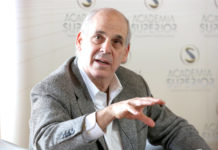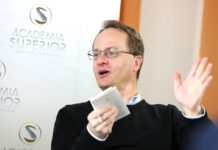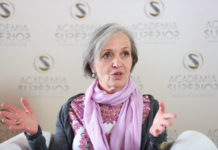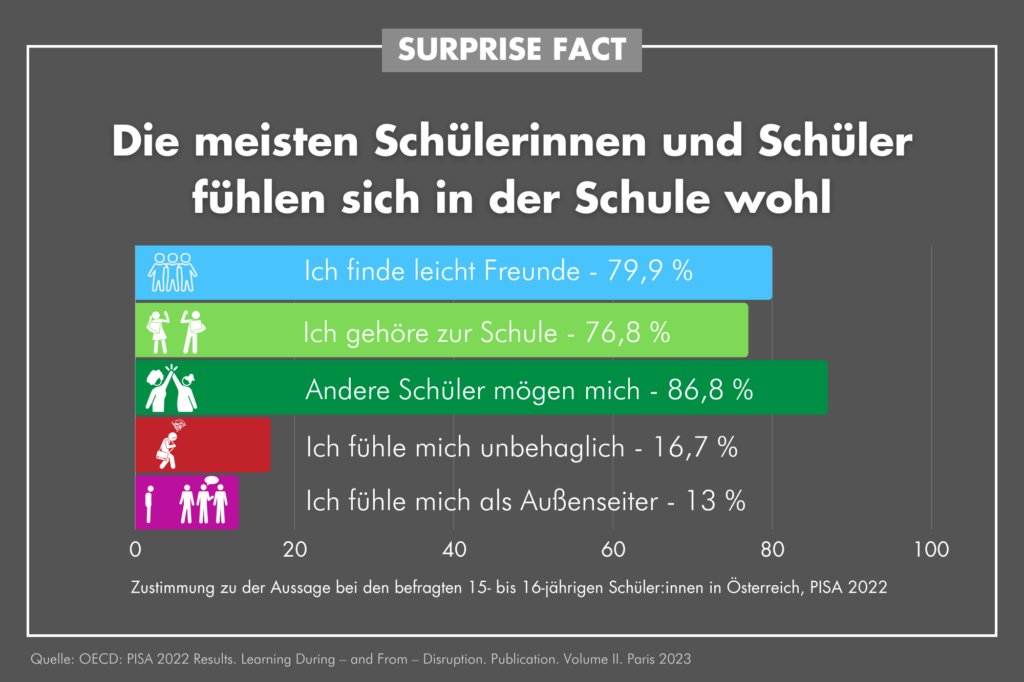Norbert Brunner was one of the experts at this-year SURPRISE FACTORS SYMPOSIUM “From Good to Great” in Gmunden.
Norbert Brunner in the interview:
As an artist, I think about going from good to great as a different kind of challenge. The challenge is not to make something new. The way I think about it, I need to make something different. It starts with me accepting what is different about myself. Or, if you’re talking about a region, about Upper Austria, it starts with the local talent, the individual talent. When you start with that, then already you are different. That’s your gift. That’s what you have to give.
That’s what I learned from my own childhood. Because when I was born, I had a kind of skin cancer directly at my mouth. I had to go to a hospital far from my home as a baby. I had to be separated from my parents who lived far away and couldn’t easily come and visit me. But that was actually very helpful to me.
I learned that differences can be good. I had to learn to recognize myself, to stay focused when I was all by myself; I had to learn how to deal with personal, emotional things. The people I met in the hospital also inspired me to see the world in a different way. Even when they were badly burned, there was so much to them. Even when they were in pain, we found a way we could have fun together. That’s so much of what art is.
When I was in the university, I loved it when one professor would talk about seeing something one way – and then afterward another professor would talk about seeing the same thing, but in a completely different way. My reaction was, this is super! Because now I’m completely lost! And that means I have to come to terms with it myself.
„Here’s what I learned: In art there are no rules.”
But you also have to learn to be your own best critic. I always have a strategy for any project I undertake. But I also have to look at the project as the process develops and be able to see it as it is happening. I have to be able to recognize that the effect I’m seeking may not work. Then I have to change it, learn from it, and be able to grow as an artist from it.
What I want from my art is to feel the intensity of it. I want to feel that it’s authentic and I want to hear the voice that comes through the work. I do not want to teach but to make aware!”
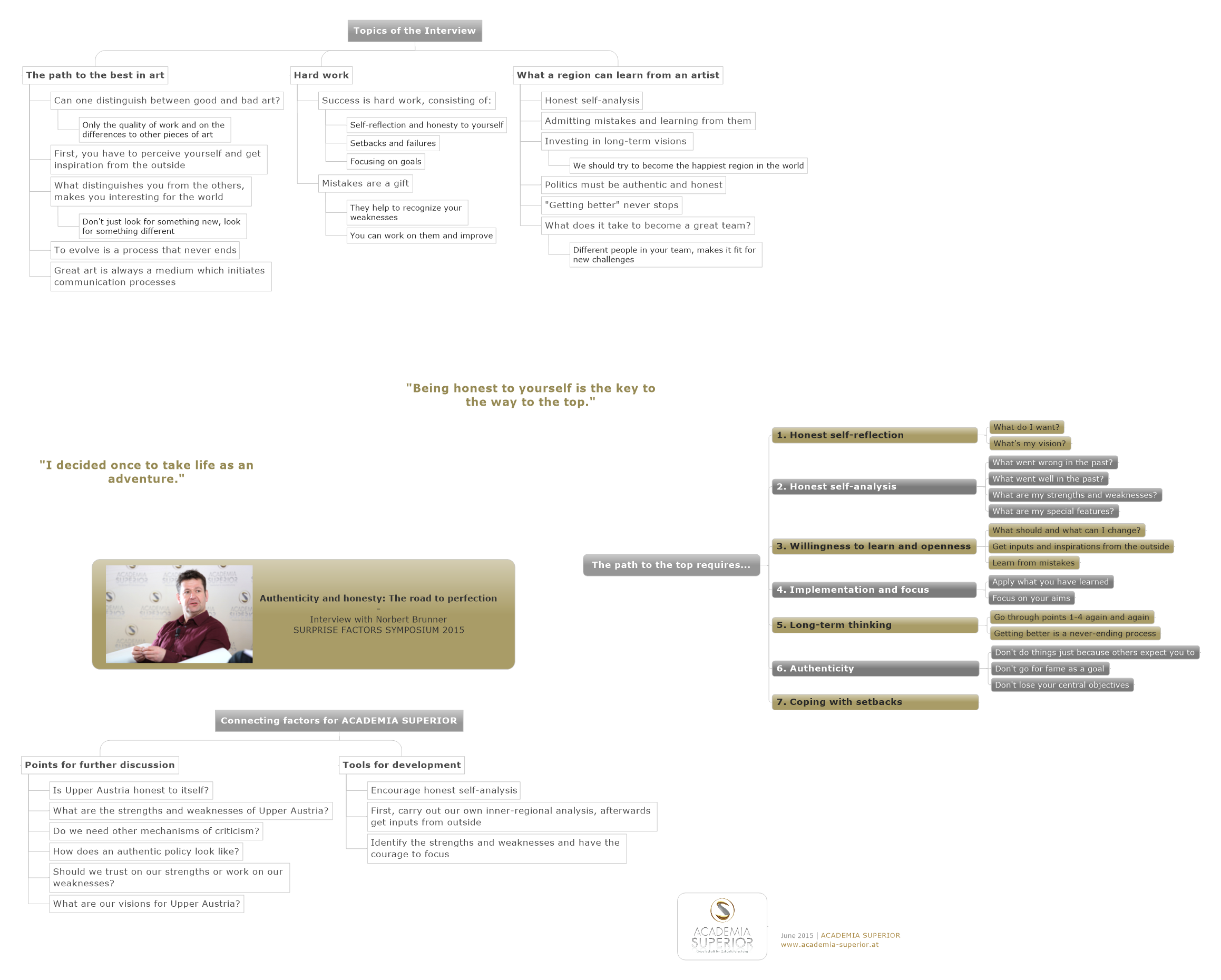
That means that, as an artist, I am looking for experiences where, in a way, I’ll be lost. I had to make a choice: Should I go to New York to do my art or should I go to Japan? I chose to go to Japan rather than to New York because, as a Westerner, I already knew New York. But I knew that if I went to Japan, there I’d have to confront a much greater difference. I wanted to recognize and learn from that difference. For me, it’s that process that is so important. In Japan they have a different way of communication. I wanted to find out what it would be like for me there. Japan was a metaphor for me. In Japan, I learned that being different is being beautiful. And I learned as well that we all are allowed to be different. I knew for myself, if I recognize this, I would be stronger as a person and as an artist.
There is a lesson from my own life and from the way I’ve become an artist. If Upper Austria wants to go from good to great, start with the strong points: What are your really big goals? How do you focus on those? Focus on what makes you different – those are the treasures you have. What do you have that you can show the world? What does the world not already know?
„That’s what makes you unique. Recognize those differences and focus on them.”
That’s how I became an artist. I wasn’t born an artist. I had no idea what art was. It was a step-by-step process. To become an artist, I had to get lost as a part of the process. Of course, when you get lost, it doesn’t feel good. It’s hard. You don’t like it. But it’s important to be in a situation where you feel different, a situation where you’re not rooted in place. I go back to my experience in the hospital as a baby. I had to recognize that what made me different was actually my gift.
Hard work is always important. But the hardest work is to recognize your self. That is extremely hard work. For me, it’s the hardest work of my life – to recognize myself and to grow as a result of that self-recognition. At the end of the day, when you’re alone in your room in front of your mirror, you have to ask yourself, Am I still honest? Is what I’m saying coming deep from my heart?
It’s very hard work to stay authentic. It’s hard work to choose to be real, rather than famous. There is fame and there is money, and as you move up in your career, those can become distractions. They can take you away from what is true for you as an artist. In the end, the real quality in art is authenticity.
About
Norbert Brunner is an Austrian object and installation artist whose work has been exhibited worldwide. He sees his work as an opportunity to enter into an energizing process of communication with the viewers and observers of its objects. He graduated from the master class for sculpture at the University of Applied Arts in Vienna. His objects and installations are unique in the world. One of his most famous works is an installation of 6 meters, which he designed for the Guerlain flagship store in Paris in 2013.
During his education Brunner discovered that differentiation in art is a major factor in personal success. The otherness of his objects and installations consists in the combination of materials, the arrangement of the individual elements and the strategy that he pursues with his works.
For example, for his works Brunner uses mirrors, acrylic glass, Swarovski crystals and photographic prints. They consist of numerous dots, which add up to an image only from a specific point of view. Norbert Brunner wants to foster the self-reflection of the viewers and bridge the gap between art and the people.


